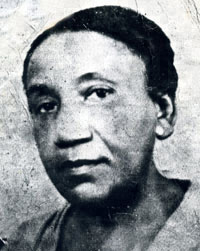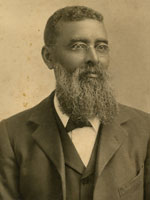

|
This month Theatre boycott deals fatal blow
Movie theatres reopened with open seating after a two-week boycott that dealt a fatal blow to segregation in Bermuda. The boycott, which was organised by members of the Progressive Group, began on June 15. Many of its members were university graduates who had returned home after studying overseas and vowed to make much needed changes to their homeland. They had been meeting regularly and in secret at the Flatts home of Rosalind and Edouard Williams, where they formulated plans for a total transformation of the society. They decided on a date for the start of the boycott and on the eve of Day One, working under cover of darkness, they blanketed the island with flyers that urged patrons to stay away from theatres. Things started slowly, but gradually gathered momentum. The numbers of people who began mingling outside theatres in Hamilton increased; there were heated debates in Parliament—where blacks were in the minority—and promises that blacks would be able to sit anywhere they wanted when the new Rosebank Theatre was completed. James Pearman, president of the company that owned the theatres, famously misread the social temperature—he described the boycott as “a storm in a teacup.”
Crucial to the boycott’s success were soapbox orators, among them Kingsley Tweed, Kenny Ebbin, Richard “Comrade” Lynch and Robert “Jungle Bunny” Smith, who delivered electrifying speeches outside the theatres. Soon theatres were empty and owners were left with no choice but to close them. Victory came with a dramatic capitulation—owners announced that theatres would reopen on July 2, and that blacks would be able to sit anywhere they wanted. Hotels and restaurants followed suit. The peaceful revolution marked the beginning of the end of segregation and members of the Progressive Group got on with their lives. They were never officially recognized until the 40th anniversary of the boycott in 1999, when social activist Glenn Fubler organized a tribute for surviving members on the steps of Hamilton City Hall, on behalf of the organization Beyond Barriers. The boycott was also the subject of Errol Williams’ documentary When Voices Rise…, which premiered at the Bermuda International Film Festival in 2002, when it won the Audience Choice Award Members of the Progressive Group were Stanley Ratteray, the leader, Rosalind and Edouard Williams, Clifford Wade, Marva Phillips, Coleridge Williams, Rudolph and Vera Commissiong, Clifford and Florenz Maxwell, Eugene Woods, Esme and Lancelot Swan, Dr. Erskine Simmons, William Francis, William Walywn and Gerald and Izola Harvey. |
|
In the News
- Settlement and slavery Celebrating emancipation A series of events to commemorate Emancipation will kick off with a celebration at the Warwick Rubber Tree on Saturday, June 19 at 5 p.m. ‘A Woman Named Prince’, choreographed by Conchita Ming, is the Bermudian slave and abolitionist Mary Prince. It features historical narrations and the Mount Zion AME Church Male Voice Choir. A week later on Sunday, July 27 at 5.30 p.m., a service of praise will take place at the Tucker’s Town burial site. The service will feature Marsden First United Methodist Church Male Voice Choir and the St. Philip’s Liturgical Dance Ministry. On Monday, July 28, the Somerset Brigade Band will lead a Friendly Society march celebrating black fellowship and entrepreneurship. The march, which will get under way at 6.30 p.m. at Barr’s Bay Park and end at Union Square, will pay tribute to the friendly societies, or lodges, which sprang up after emancipation as self-help organisations for the newly freed slaves. All events have been organised by Government’s Department of Community and Cultural Affairs to commemorate the Emancipation of slaves, which occurred in Bermuda and throughout the rest of the British Empire on August 1, 1834. Emancipation Day and Somers Day are the two seminal events in Bermuda’s history. Somers Day commemorates the wreck of the Sea Venture off St. Catherine’s Beach on July 28, 1609, an event that led to Bermuda’s settlement. Somers Day will be observed on August 1, and Emancipation Day on July 31. Taken together, they are the dates of the two-day annual Cup Match public holiday. Stamp of approval for Brown, Browne The Post Office has issued a new set of ‘Pioneers of Progress’ stamps, honouring lawyer and PLP politician Dame Lois Browne-Evans and Roosevelt Brown. Dame Lois, Bermuda’s first female lawyer, served in Parliament for 40 years and was the long-time leader of the PLP. Roosevelt Brown was the leader of the Committee for Universal Adult Suffrage, whose activism led to the abolition of the property vote in the early 1960s. Government buys The home of Berkeley Institute founder Samuel David Robinson [above] has passed into Government hands. The purchase price for the property, located on Princess Street, Hamilton, was $2.5 million. Robinson, a prominent 19th century businessman, met with 10 other men at Wantley in October 1879 to discuss the feasibility of establishing a high school. Their vision became a reality 18 years later, when the Berkeley Institute opened its doors. Berkeley was the leading high school for black Bermudians for more than a century. Government says it will use the property for housing. A Bermuda Archives exhibition focusing the life of pilot Jemmy Darrell and other free blacks continues through October. ‘The Life & Times of Pilot Jemmy Darrell, 1793 to 1816’, explores the legal status of free persons |
|||||||||
| © 2008 Bermuda Biographies All rights reserved |
|||||||||||


